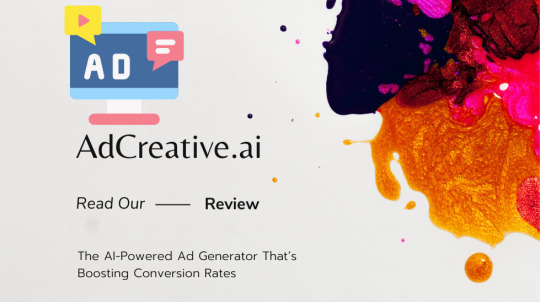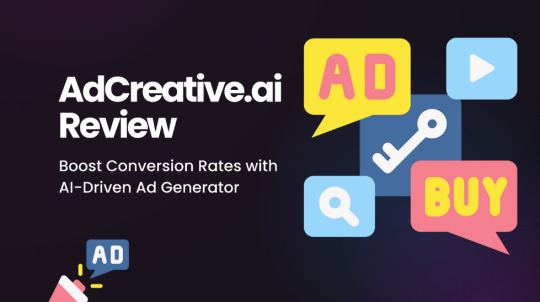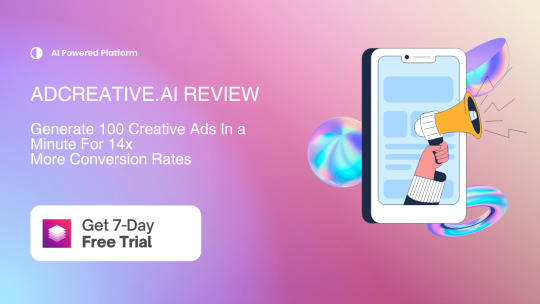thinkdigity
17 posts
Don't wanna be here? Send us removal request.
Text
🚀 Ready to Skyrocket Your Social Media Engagement? 🚀
I just published a blog post featuring 13 powerful prompts designed to captivate your audience and elevate your social media marketing efforts. 🌟✨ Whether you’re looking to share behind-the-scenes content, run exciting giveaways, or highlight customer success stories, these prompts will help you create meaningful interactions and maintain a consistent posting schedule.
Here's a sneak peek of what you'll find: 1️⃣ Behind-the-Scenes Looks 2️⃣ Engaging Questions 3️⃣ User-Generated Content 4️⃣ Contests and Giveaways 5️⃣ Customer Success Stories …and more!
🔗 Read the full article here!
Let’s transform your social media strategy together! 😊
0 notes
Text
Boost Your Social Media Engagement with These 13 Powerful Prompts!
Engaging your audience on social media can be challenging, but the right prompts can make all the difference! 🚀✨ I’ve just published a blog post that dives into 13 effective social media prompts designed to captivate your audience and elevate your marketing efforts.
Whether you’re looking to share behind-the-scenes content, run exciting contests, or highlight customer success stories, these prompts will help you create meaningful interactions and maintain a consistent posting schedule.
🔗 Read the full article here!
Here’s a sneak peek of what you’ll find:
1️⃣ Behind-the-Scenes Looks
2️⃣ Engaging Questions
3️⃣ User-Generated Content
4️⃣ Contests and Giveaways
5️⃣ Customer Success Stories
…and so much more!
Let’s transform your social media strategy together! 🌟💬
0 notes
Text
Copywriting For Beginners
Are you new to copywriting and eager to improve your skills? Check out our latest blog post: "Copywriting For Beginners: How To Get Better At It?" ✍️✨
Whether you're an aspiring copywriter, a marketing student, a small business owner, or a content creator, this guide is packed with invaluable tips and strategies to help you master the art of persuasive writing.
What You'll Learn:
Essential copywriting principles
Tips for crafting compelling headlines
How to understand and connect with your audience
Techniques to improve your writing style
Practical exercises to enhance your skills
Don't miss out on this essential resource! Dive into the blog and start your journey to becoming a copywriting pro today. 🚀
👉 Read the full article here: https://thinkdigity.com/copywriting-for-beginners/
0 notes
Photo

🚀 Dive into the Future of Marketing with AI-Driven Ads! 🤖 Attention Business Owners, Marketers, E-commerce Businesses, Startups, and Marketing Agencies! 📢 Ready to unlock the potential of AI in your advertising strategies? Our latest blog post, "Understanding AI-Driven Ads," is your guide to staying ahead in the digital marketing game. 🌟 Discover how AI is reshaping the advertising landscape and boosting conversions. 💼💡 Don't miss this opportunity to revolutionize your marketing efforts. Click the link to read more and harness the power of AI in your campaigns. 📈🔥 Read Now: https://thinkdigity.com/adcreative-ai-review/ #AIAdvertising #DigitalMarketing #AdCreativeAI #MarketingInnovation #ReadMore #MarketingTips #ThinkDigity #BusinessGrowth
0 notes
Photo

🚀 Ready to Supercharge Your Marketing? Get Started with AdCreative.ai! 💡 Calling all Business Owners, Marketers, E-commerce Businesses, Startups, and Marketing Agencies! 📢 Embark on an exciting journey to transform your advertising strategies with AdCreative.ai. Our blog post, "Getting Started with AdCreative.ai," is your key to unlocking the power of AI in your marketing campaigns. 🌟 Discover the steps to harness AI technology for skyrocketing conversions and unparalleled success. 💼📈 Don't miss out on this opportunity to revolutionize your marketing game. Click the link to read more and take the first step towards advertising greatness.🌐🔥 Read Now: https://thinkdigity.com/adcreative-ai-review/ #AIAdvertising #DigitalMarketing #AdCreativeAI #MarketingInnovation #ReadMore #MarketingTips #ThinkDigity #BusinessGrowth
0 notes
Photo

📝 Unleash the Power of Persuasion: Mastering Ad Copy Optimization! 💼 Hey Business Owners, Marketers, E-commerce Businesses, Startups, and Marketing Agencies! 🚀 Are your ads not getting the clicks and conversions they deserve? It's time to level up your marketing game! Dive into our latest blog post, "Optimizing Ad Copy," and discover the secrets to crafting ads that captivate and convert. 🌟 Learn proven techniques to make your ad copy shine, leaving a lasting impression on your audience. 💡✨ Don't miss this chance to revolutionize your ad campaigns. Click the link to read more and take the first step toward advertising greatness.📈🔥 https://thinkdigity.com/adcreative-ai-review/ #AIAdvertising #DigitalMarketing #AdCreativeAI #MarketingInnovation #ReadMore #MarketingTips #ThinkDigity #BusinessGrowth
0 notes
Photo

If you’re looking to create many high-quality, creative ads and social posts quickly, AdCreative.ai is the perfect AI tool for you! This AI-powered platform allows you to generate 100 ads and social media posts in just 60 seconds, and the best part is that they are all unique.
This tool has helped me a lot with my advertising campaigns. In this AdCreative.ai review, I’ll explain why you should try this AI tool. https://thinkdigity.com/adcreative-ai-review/
1 note
·
View note
Text
SEO Ranking Factors: What You Need to Know to Boost Your Website Traffic in 2023
Attention, all you digital wizards, marketers, and content creators! Want to boost your online presence? Dive into the world of SEO Ranking Factors and take control of your website's destiny. 🚀
Discover the secrets to success in our latest blog post: https://thinkdigity.com/seo-ranking-factors/. 📚🔍
👉 Learn how to: ✨ Rule the search engine rankings ✨ Craft content that Google and users adore ✨ Stay ahead of the SEO game
Ready to make your mark? Click the link and explore the full article on our website. Don't miss out on this opportunity! 💡🌐
#SEO#RankingFactors#DigitalMarketing#WebsiteOptimization#LearnSEO#OnlineVisibility#MarketingTips#ReadMore#ConquerSEO
0 notes
Photo

Create a website for free: A step-by-step guide for beginners Hey everyone! I'm excited to share this new blog post with you all: How to create a website for free: A step-by-step guide for beginners. In this post, I'll walk you through the entire process of creating a website from scratch, even if you have no coding experience. You'll learn how to: Choose a domain name and web hosting provider Install WordPress Choose a theme and customize your website Add pages and content to your website Publish your website Click the link below to read the full post and get started on creating your own website today! https://thinkdigity.com/how-to-create-a-website-free/ #howtocreateawebsite #freesitebuilder #webdesign #websitetutorial #beginnerwebdesign #DIYwebsite
0 notes
Photo

If you're looking to create many high-quality, creative ads and social posts quickly, AdCreative.ai is the perfect AI tool for you! This AI-powered platform allows you to generate 100 ads and social media posts in just 60 seconds, and the best part is that they are all unique. This tool has helped me a lot with my advertising campaigns. In this AdCreative.ai review, I'll explain why you should try this AI tool. https://thinkdigity.com/adcreative-ai-review/
1 note
·
View note
Link
Building a website can be daunting, but it doesn't have to be! Wix offers the best free plan of all website builders. You can build a website without spending a cent and get access to all the features of Wix's paid plans. See the review about Wix; visit the link... https://thinkdigity.com/wix-review/
0 notes
Photo

If you're starting in website building, selecting the perfect web hosting platform is critical for success. But with so many options available, how do you pick one that will meet all your needs and give your site a strong foundation? Finding the best host can help ensure visitors have an enjoyable experience on your website - so get off to a great start immediately! https://thinkdigity.com/best-web-hosting-services/
0 notes
Photo

Stop spending hours figuring out how to get your website up and running! With this easy-to-follow guide, you can build a stunning site in less than an hour--no fancy design skills required. Find the tips and tricks necessary for success by clicking the link below today! https://thinkdigity.com/how-to-create-a-website-free/
0 notes
Photo

Unsure about which hosting provider to choose for your website? Check out our list of the best web hosting providers. We have done all the research for you and compiled a list of the best providers in the industry. You can also find reviews and ratings from real customers so you can make an informed decision. Having a website that is always up and running is crucial for any business. That’s why it’s important to pick a reliable hosting provider. With one of these top providers, you can rest assured that your website will be safe and secure. Pick a web host today from our list of the best providers! https://thinkdigity.com/best-web-hosting-services/
0 notes
Text
How To Spot A Fake Product Review Online?

Is that review for the new blender you're thinking of buying genuine? Or is it fake? With so much online shopping these days, it can be tricky to tell which reviews are honest and which ones are fake. But don't worry, we're here to help! In this post, we'll show you how to spot a fake product review online. So read on and learn how to protect yourself from scams!
Does it sound like a genuine person speaking?
One of the easiest ways to spot a fake review is to look out for unnatural language. If it sounds like the writer is trying too hard to say positive, then it's probably fake. Genuine reviews from real people are usually more laid back and detailed.
Are there spelling mistakes?
Fake reviews often have mistakes in their writing. So if you notice a lot of spelling and grammar mistakes, it's probably not a genuine review.
Are the reviews too good to be true?
If all the reviews for a product are incredibly positive and gush about how perfect it is, then it's likely that they're fake. Genuine reviews from real people are usually more honest and nuanced.
Do the reviews all have the same tone?
If all the reviews for a product sound too good to be true, they probably are. Genuine reviews from real people usually have different tones and opinions.
Do the reviewers use vague language?
Fake reviewers often use vague language like "amazing," "perfect," and "best." Genuine reviewers usually give more specific details about why they liked or didn't like a product.
Do the reviewers mention the price?
If the reviewers mention the product's price, they're likely fake. Genuine reviewers are usually more interested in talking about the features of the product, not how much they paid for it.
Do the reviewers have a lot of followers?
If the reviewers have a lot of followers, they're likely fake. Genuine reviewers usually don't have many followers since they're not trying to sell anything.
Read product reviews on multiple sites.
The best way to spot a fake review is to read reviews on multiple sites. This will help you get a more well-rounded view of the product. If all the reviews are positive and sound too good to be true, then there's a good chance they're fake. So be sure to do your research before buying anything online!
So there you have it! Now you know how to spot a fake product review online. By following these tips, you'll be able to protect yourself from scams and make more informed decisions about what to buy.
0 notes
Text
How To Success On SEO Content Writing
Search engine optimization is an $80 billion industry. Are you getting your money’s worth?
SEO writing requires analytics proficiency and high-quality copy skills. It’s the convergence of data science and art.
So how do you do it right? How do you please readers, search engines, and your boss all in one go?
What is SEO writing?
SEO writing is the implementation of keywords and key phrases within web content. Copywriters and marketers use SEO to increase their site’s organic visibility and SERP rankings. The best way to write for SEO is to pair high-quality copy with targeted search terms.
Key SEO terms, defined
Long-tail keywords: A string of keywords or phrases, often 3-6 words long. Long-tail terms are more specific and are queried less frequently relative to high-level, generic terms. Think “basketball shoes” vs “2019 basketball shoes for sale Colorado.”
SERPs: Search engine results in pages. In other words, the Google page contains all the results users can click on after a query.
SERP position: The exact ranking in Google. For instance, Position 12 would refer to page 2 of Google, since only 10 listings typically appear on Page 1.
Anchor text: The words or phrases that are hyperlinked, directing traffic to other web pages.
Meta description: A short summary of a webpage that appears in SERPs – often 160 characters – can entice searchers to click a result.
Title tag: The title of a webpage that appears in Google SERPs and as the text on browser tabs.
Search queries: Words that users type or say into search engines.
Search volume: The number of times a term is queried per month.
Click-through rate: Percentage of clicks for a SERP result relative to how many times searchers saw that result.
Conversion rate: Percentage of people who complete the desired action (a click, a purchase, etc.) divided by the total number of people who visited that page.
Organic traffic: The number of users who found your site via a search engine under their own free will and not through paid ads or other sites.
Structured data (schema): How SEO elements like metadata, keywords, and HTML are formatted on the page. Data that is structured makes it easier for search engines to crawl and index pages.
Ranking factors: The general components that search engine algorithms consider when deciding which pages should rank higher than others.
Backlink: A hyperlink that directs traffic to another page, either internally or externally.
Page and Domain Authority: A score that measures how “authoritative” a page or site is on a scale of 1-100.
Pageviews: A number of times a page is viewed.
Pageviews per Session: A number of pages viewed in 1 session by each user, before leaving the site entirely.
Organic keyword difficulty: A metric of how easy or difficult it will be to rank for a given keyword in organic search, on a scale of 1-100.
Start with your goals
The foundation for any SEO content strategy is to know what you hope to achieve. Set measurable goals before you begin, so that copywriters, marketing managers, and other stakeholders are all working toward the same KPIs.
Here are common metrics to measure:
Click-through rate.
Conversion rate.
Organic traffic.
Backlinks.
SERP position.
Dwell time.
Page and Domain Authority.
Organic keyword opportunity/difficulty.
Pageviews per Session.
SEO copywriters should be given the data they need to succeed so that each new page that’s created is tied back to a core business goal.
Know your SERP presentation
There are a growing number of ways search engines present your web pages to the public, known as featured snippets. This means not every piece of content is presented to the searchers in the same way.
Even if two companies write an article about the same topic, if one of those pages ranks highly in SERPs, it could earn a featured snippet. So while company A is presented as a generic blue link, company B is presented with additional images, bolded text, and more.
To stand out from competitors, understand how your content is going to appear in Google SERPs – then optimize for that specific format.
Paragraph.
List.
Table.
Image carousel.
Local 3-Pack.
Knowledge Graph.
Sitelinks.
People also ask.
Top stories.
Think in terms of ranking factors
In line with your company’s own commercial objectives, there are also Google’s preferences to keep in mind. The search engine’s primary algorithm, RankBrain, helps process web pages and determine where they should rank in SERPs.
So content writing isn’t just pleasing your readers; it’s about pleasing Google too. That’s why it’s important to know the specific ranking factors Google looks at. There are more than 200, but 10 of the most prominent are:
Content quality: Is your writing accurate, relevant, and user-friendly?
Backlinks: Do other sites link to your content?
HTTP: Is your site secure?
User experience: Is your content visually and informationally valuable + easy to engage with?
Mobile-first: Is your site optimized for mobile screens?
Page speed: Does your page load in 2 seconds or less?
Direct traffic: Do users come directly to your site, or do they have to Google you first?
Content depth: Is your content more comprehensive than similar pages on the web?
Behavioral signals: Do people share, comment, and mention your content?
Schema: Is your content easily understood by search engines?
Strategic, not stuffy: How to use keywords
SEO has always been an evolving discipline. In the earliest iterations of the internet, the content was ranked and served to users based on repeating the same keywords as many times as possible. This was referred to as keyword density.
However, in the last five years, Google’s algorithms have gotten smarter, and they know that keyword stuffing is spammy and not useful to readers. So, copywriters have had to shift their approach: Write for the end-user, not a magic number of keywords.
What this means in practice is that each page should be built around a single keyword. Writers should cover every angle and aspect of that topic and its associated subtopics. Think ahead: What follow-up questions might a reader have after reading your piece? Include the answers to those questions in your writing right from the start.
The intent is to be the single best resource for a topic, providing maximum value to readers. Don’t worry about using keywords in every other sentence. If you’re doing your job correctly, the keywords will naturally flow in the article.
Top SEO copy tips
You are not your reader. Do not write for yourself, write for your target audience.
Mimic the language and voice of your audience, whether that’s third-person formal or second-person conversational.
Include keywords where they will have the most impact: metadata, header tags, page title and anchor text.
Use short paragraphs of only a few sentences.
Strategically leave white space so readers can scan content at a glance.
Externally link only to reputable, authoritative sites with high Domain Authority scores.
Internally link only where relevant – not to every single related blog post or possible CTA.
Include as much data as possible to support your claims.
Embed relevant imagery so that visuals can complement your narrative.
Think of search queries as article titles.
Write for as long as it takes to comprehensively cover the topic (aka don’t aim for an arbitrary word count).
Write with featured snippets in mind.
Optimize the fine print: Title tags, meta descriptions, and alt text
SEO writing is part prose, part process. There are defined steps writers should take to ensure they’re thinking about each piece of content holistically, both on and off the page.
One of the most important elements of SEO copywriting is nailing metadata.
Metadata is a cue to search engines: It helps tell the story of what your content is about and how it should be presented in SERPs.
Optimizing title tags, meta descriptions, and image alt text may take only 75 words in total, but those 75 words are vastly more important than the rest of the copy that appears on the page.
Here is some guidance:
Optimize title tags
Use only 1 header tag per page and try to include a targeted, primary keyword.
Keep it to 70 characters or less.
Each page should have a unique title tag – no duplicates.
Optimize meta descriptions
Keep it to ~160 characters so that it doesn’t get cut off by Google.
Use click-worthy phrasing and don’t regurgitate copy already on the page.
Optimize alt text
Use descriptive language that closely matches the image.
Include keywords where relevant.
Keep it to 125 characters or less, with tags separated by commas.
Structure matters: Headers, subheaders, and sub-subheaders
Think of header (HTML) tags as the skeleton of your content.
Structurally, headers keep your copy organized and provide readers with a general outline of what your topic entails (without them having to read every single word).
In the eyes of search engines, though, headers are also key elements of code that signal what the article is about. Proper header tags allow search crawlers to quickly analyze your page and correctly index it in SERPs.
Headers are simple because they follow a descending order:
H1: The title of your page (only use one).
H2: Core points or topics within your article (can be used as many times as needed).
H3: Subtopics that fit underneath H2s.
H4+: Anything beyond H4 is rarely used, however, most text editors will go up to H7.
Including keywords in your headers is a key SEO tactic as well, so frame your article structure around which keywords and topics are most relevant and useful to the reader.
On-page optimization and re-optimization
SEO dictates that every piece of content has the chance to outperform another at any given time. While you’re writing an article, someone else could be writing the same article – just better.
It can quickly become a rat race.
Often referred to as the skyscraper technique, look for ways to continually optimize your existing pages over time. If an article is ranking in position 3, how can you leapfrog to position 1?
One of the easiest ways to drive more traffic and improve search engine rankings is to start with existing content that already performs reasonably well. Then make minor tweaks, such as adding a few more paragraphs of in-depth copy or restructuring header tags to be clearer.
Re-optimizing content takes less time to reap greater rewards than from-scratch pages. Create a re-optimization schedule (say, every three to six months) and adjust your pages accordingly to maintain and enhance SERP share.
How long does it take to work?
Based on various industry studies and several of our own experiments, it takes about 100 days at minimum for content to mature. “Mature” in this instance refers to how long it will take Google to definitively rank your page in SERPs. Prior to those 100 days, your ranking will fluctuate a lot, sometimes appearing on Page 1, other days dropping to Page 2.
Behind the scenes, Google is testing if your content has staying power – if it’s valuable enough to keep on Page 1. If after 100 days or so your content ranks highly, it will likely stay there (until a competitor writes a better piece of content and outranks yours).
Don’t base all of your judgments or KPIs on immediate SEO performance. Positive metrics accrue over time, so ensure your commitment to SEO and content marketing is a long-term one.
1 note
·
View note